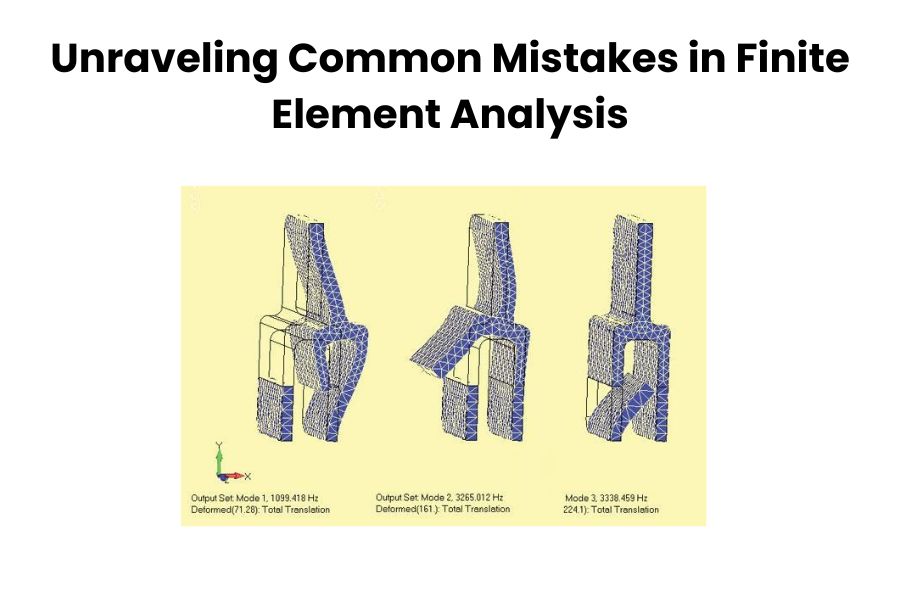Unraveling Common Mistakes in Finite Element Analysis
Finite Element Analysis (FEA) is one of the most powerful tools for analyzing and simulating simple to complex engineering problems in any industrial field. But cause of some common mistakes in Finite Element Analysis (FEA) can lead to inaccurate results and misleading interpretations. Some common mistakes that can occur during the FEA process are listed here:
Incorrect Modeling: One of the common mistakes is not accurately representing the real-world geometry and boundary conditions in the FEA model. This can include missing or simplified features, incorrect material properties, or incorrect application of loads and constraints. It is crucial to carefully define the geometry, material properties, and boundary conditions to ensure accurate results.
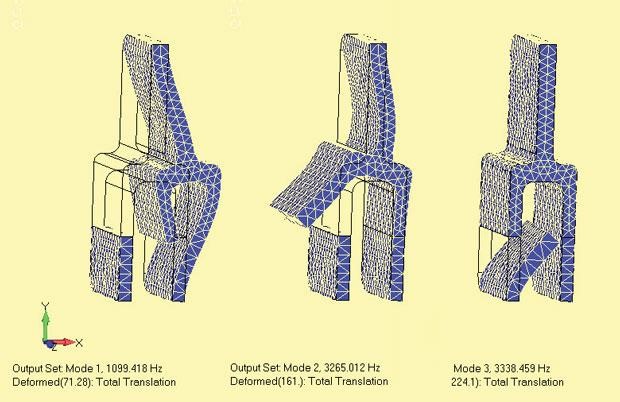
Insufficient Mesh Density: Using an insufficient mesh density can lead to inaccurate results, especially in areas of high stress gradients or regions where significant deformation occurs. It is important to ensure that the mesh is refined appropriately to capture the important features and variations in the solution accurately.
Material properties: Another common mistake is using incorrect or inaccurate material properties in the FEA model. The material properties of the various types of material should be well-characterized and replication of the real-world behavior. In other words, it is essential to select appropriate material models based on experimental data or established material properties. Using inappropriate or outdated material properties can lead to misleading results.

Neglecting boundary conditions: Accurate boundary conditions are crucial for obtaining meaningful results in FEA. Failing to apply the correct constraints or loads can lead to unrealistic or erroneous outcomes. It’s important to carefully define the boundary conditions based on the physical problem being analyzed.
Neglecting mesh sensitivity analysis: The choice of mesh size and element type can significantly affect the accuracy of the FEA results. Neglecting to perform a mesh sensitivity analysis to determine the optimal mesh size can lead to either overly coarse or excessively refined meshes, impacting the accuracy and computational efficiency of the analysis.
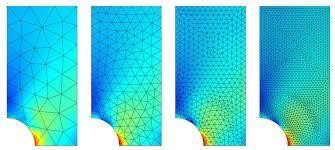
Neglecting Contact or Interaction Effects: In cases where contact or interaction between different components or surfaces is present, neglecting or improperly modeling these effects can lead to erroneous results. Properly defining contact conditions, including frictional or nonlinear behavior, is crucial to capture the correct behavior of the system.

Convergence issues: FEA analyses often require iterative calculations to converge on a solution. Insufficient convergence criteria or inappropriate solution settings can result in non-converging analyses or inaccurate results. It’s important to carefully set up the solution parameters and monitor convergence to ensure reliable results.
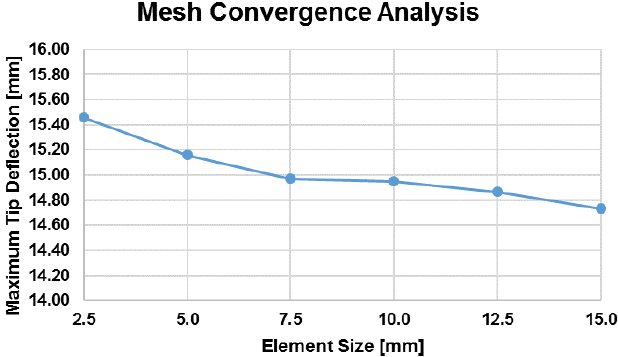
Overlooking Element Quality: Element distortion occurs when elements are excessively stretched, compressed, or distorted in some way. Poor element quality, such as highly distorted or poorly shaped elements, can result in inaccurate results. It is important to check for element quality metrics, such as aspect ratio, skewness, or Jacobian, and ensure that they meet acceptable criteria. Checking for element distortion and adjusting the mesh accordingly is crucial to obtaining reliable results.
When working with ANSYS Workbench in India, it is essential to learn about element distortion, which refers to the excessive stretching, compression, or distortion of elements. Artem Academy is an excellent resource for learning ANSYS Workbench in India. It is important to evaluate element quality metrics such as aspect ratio, skewness, or Jacobian to ensure accurate results. By checking for element distortion and making necessary adjustments to the mesh, reliable and precise outcomes can be obtained.
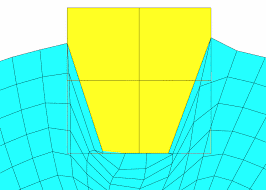
Ignoring model validation: It’s important to validate the FEA model against experimental data or known analytical solutions whenever possible. Neglecting model validation can result in a lack of confidence in the simulation results. Comparing the FEA results with experimental or analytical data helps identify and rectify any discrepancies or errors.
Improper Interpretation of Results: Incorrect interpretation or overreliance on FEA results without considering limitations or assumptions can lead to incorrect design decisions. It is crucial to critically analyze and interpret the results while considering the underlying assumptions and limitations of the FEA model.

Remember, FEA is a complex and iterative process, and attention to detail is crucial. To mitigate these mistakes, it is important to have a thorough understanding of the underlying theory and assumptions of FEA, pay attention to model setup and boundary conditions, verify results against experimental data or analytical solutions when available, and constantly validate and refine the FEA models based on real-world observations and feedback. Collaboration with experienced FEA analysts and seeking peer review can also help in identifying and rectifying potential mistakes. Also, by being mindful of these common mistakes and following best practices, engineers can improve the accuracy and reliability of their FEA simulations.

